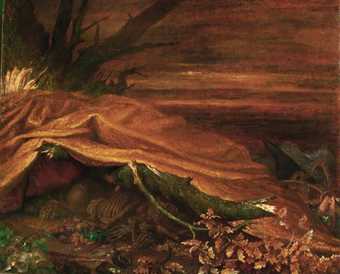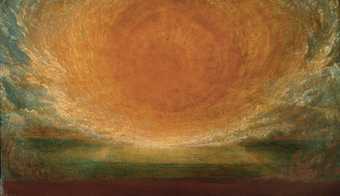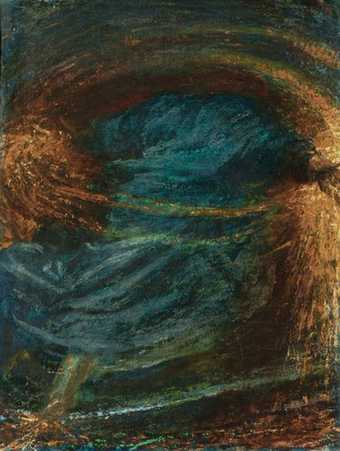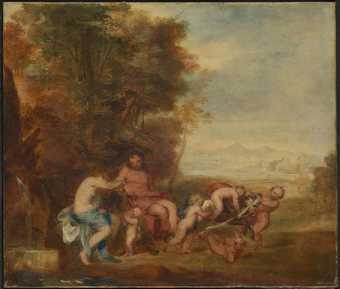Here are some of his strangest pictures:

George Frederic Watts
Can These Bones Live? 1897–8
Watts Gallery Collection
The Belgian Symboilst painter Fernand Khnopff knew Watts’s work well and favourably reviewed this work. Even though the title is taken from a passage in the Bible, Watts work intended it to be a withering attack on his country. ‘The bones in the painting’, he said to a visitor to his studio, ‘refer to the state of the nation’. At the heart of this dark picture is a fallen oak tree that crushes a skeleton, and lying around are various symbols to emphasise the point, including an assassin’s knife, a champagne glass and horses hooves filled with dice. According to the original architect of the Watts Gallery Christopher Hatton Turnor, Watts ‘persistently wore a black band on his arm. After a time I asked him who he was in mourning for? – no-one – “I mourn for the stupidity of my country.”’

George Frederick Watts
After the Deluge (The Forty-First Day) c.1885–92
Watts Gallery Collection
Watts’ wife Mary recounted this work:
A visitor looking at After the Deluge remarked that into such as scheme of colour he felt it would not have been possible to introduce the figure of the Creator; “Ah no”, Mr Watts replied. “But that is exactly what I could wish to make those who look at the picture conceive for themselves. The hand of the Creator moving by light and by heat to re-create. I have not tried to paint a portrait of the sun – such a thing is unpaintable – but I wanted to impress you with the idea of its enormous power.”

George Frederic Watts
The Sower of the Systems c.1902
Watts Gallery Collection
Watts may have been thinking about astrology when he painted this picture. He was fascinated by star-gazing and after having observed the rings of Saturn through Sir James South’s telescope had commented that ‘it was a sight that dwarfed all others.’ Watts had a great admiration for scientists and wrote that they were ‘dwelling…in a kingdom of infinite wonder – larger than that of the poet or artist.’
He was also pursuing his theme of the unpaintable – God. ‘We can never return’, he said, ‘to the early ideas of Him as a kind white-bearded old man. If I were ever to make a symbol of the Deity, it would be as a great vesture into which everything that exists is woven.’
Watts would also refer to the story of a child who on being asked to draw a picture of God drew ‘a great number of circular scribbles, and putting his paper on a soft surface, struck his pencil through the centre, making a great void.’
In his day Watts was the only artist who had his own permanent rooms at the Gallery of British Art [now Tate Britain] – from 1897 to 1938. Some of these works have been brought together at the Watts in a display Painting For The Nation: G.F. Watts At The Tate.

